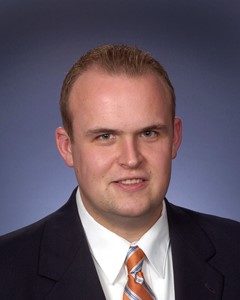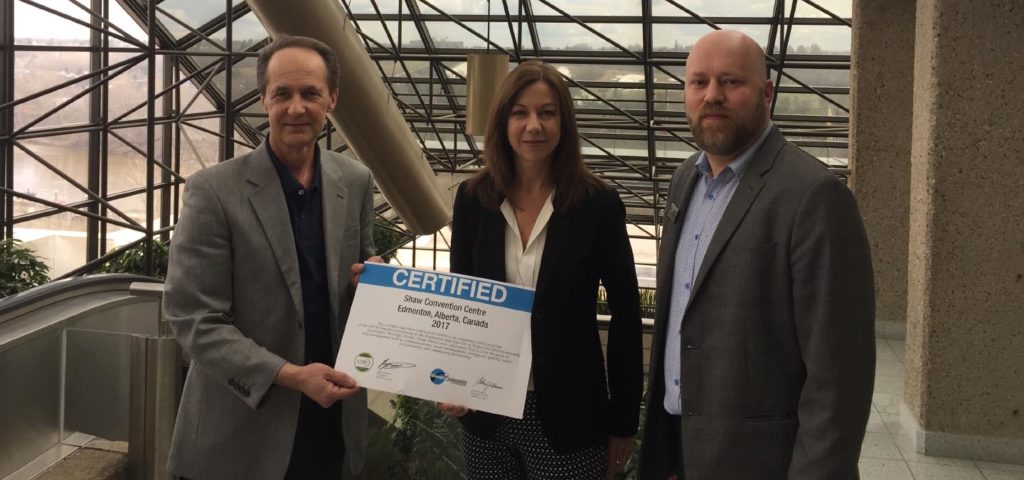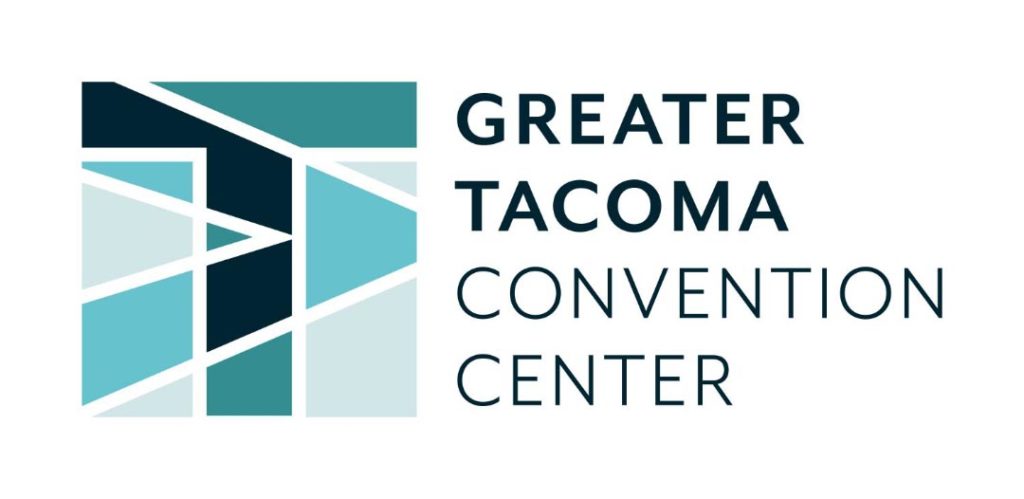One Member, One Vote Passage Will Help Young Professionals Grow In IAVM And The Industry
John Marquardt, CVP, serves as assistant director for event management at the State Farm Center at the University of Illinois in Champaign as well as the chair of IAVM’s Young Professionals Committee. As such, Marquardt leads a dedicated committee whose mission is to “work with IAVM management to promote the venue management industry with students, recent graduates and young professionals under the age of 30. It acts as a think tank for new and emerging trends in communications, social media, technology and membership. Members of this committee may be 30 years of age or under.”
Marquardt steadfastly believes that written mission statement can be even better executed in the future should those same young professionals have an opportunity to vote, a right that will come to fruition for this segment of IAVM membership should a vote pass that began last Friday by current eligible IAVM members on One Member, One Vote. The initiative follows extensive study, review and open discussion over the last two years, at which point the IAVM Board of Directors voted unanimously to bring forward proposed changes to the bylaws that would make the Association more inclusive and diverse in its decision making. As a means to incorporate the perspective of all IAVM members, these changes would allow every member of IAVM equal opportunity to engage in the Association through the right to vote. These proposed changes must be approved by two-thirds of the current voting members of IAVM.
“I support the One Member, One Vote initiative on a variety of fronts as a member of IAVM, but first and foremost because of the  impact that it will have on Young Professionals within the IAVM family,” Marquardt said.
impact that it will have on Young Professionals within the IAVM family,” Marquardt said.
“As a one-time Young Professional member of IAVM and current Chair of the Young Professionals Committee, I have seen the significant thought, dedication, and contributions of our Young Professional members, and the impact that they have on our organization. As future leaders of our industry, they already demonstrate a great deal of critical thought, intuition, and innovative energy that helps propel our organization forward. Our Young Professionals help keep our organization relevant in a rapidly-advancing business climate where technology and cutting-edge ideas evolve by the minute. Young Professionals help all of us keep our eye on the proverbial ball of change and innovation in our industry, as they represent our future. By allowing them a seat at the table through One Member, One Vote, we can ensure their contributions will be heard and will help to shape our IAVM family in to perpetuity.”
Marquardt acknowledges that due simply to career experience those just getting started in the industry cannot possibly have the broad base of knowledge that veteran peers enjoy. Nonetheless, as those same peers transition toward retirement or lessening their job responsibilities, it is important to replenish that experience with those who are younger and thirsting for knowledge and participation within IAVM.
“Young Professional members of IAVM still have lots to learn about our industry, no doubt,” Marquardt said. “However, providing them a voice and a vote toward the direction of our future will help keep them engaged, involved, and energized as IAVM accelerates in to the exciting future of our industry.”
Current eligible voters received an email ballot on Friday. The voting period is open now so please look in your inbox for the ballot.
Edmonton’s Shaw Conference Centre Employee Recognized For Excellence In Venue Engineering

The Shaw Conference Centre (SCC) is announced that Jan Szabat, the convention center’s director of engineering services, has been recognized by Venues Today Magazine, Venue Solutions Group and the Venue Operations Summit Board of Advisors for excellence in venue management. The award recognizes one engineer working in a venue in North America who has gone above and beyond in solving problems, instituting new programs and maintaining their facility.
For the past 30 years, Szabat has overseen all maintenance for Edmonton’s iconic, 34-year-old convention center. From flood restoration to multi-million dollar escalator modernization and managing the team that keeps the building running, Szabat has ensured the Shaw Conference Centre continues to be a destination for the meetings, conventions and events industry.
“We’re thrilled Jan is being recognized for leading the way in engineering services and expertise,” said Lisanne Lewis, general manager of the venue. “Jan’s stewardship of our landmark facility helps to build Edmonton’s brand and reputation as a leader in sustainability and venue management. This award is a testament to his dedication and passion for his craft.”
Szabat has played an instrumental role in fulfilling the convention center’s brand promise of sustainability. Under his leadership the Shaw Conference Centre has become BOMA BEST certified, the first conference venue in Canada to receive Green Key level 5 certification, and one of five venues in Canada to receive the prestigious ASTM International sustainability certification.
Pictured: Jan Szabat, Lisanne Lewis
Centerplate Hosts “Zero Waste Lunch” At Waste Expo
Centerplate, the New Orleans Ernest N. Morial Convention Center’s exclusive food and beverage provider, hosted a “Zero Waste Lunch” at the 2017 WasteExpo convention on May 10. Chef Brandon Felder, executive chef, and his team served industry attendees a menu of Beet Salad, Abita Amber BBQ Shrimp, and Bananas Foster Bread Pudding, made with parts of food that would otherwise be discarded.
The lunch was created in partnership with the New Orleans Ernest N. Morial Convention Center, Centerplate, GES, Salvage Supperclub, The Green Project and The Composting Network. The event took place inside a rented dumpster equipped with salvaged wood seats and flooring and rescued doors for a table, all of which came from local companies.
WasteExpo is a regular visitor to New Orleans, convening here nearly every three years using approximately nearly 600,000 gross square feet of exhibit space and attracting over 11,000 waste management professionals.

5/9/2017; New Orleans, LA.; Waste Expo 2017 at the Ernest N. Morial convention center in New Orleans
The “Zero Waste Lunch” consisted of the following ingredients:
•Beet Salad – Mixed greens, goat cheese, candied pecan bits and beet puree with champagne vinaigrette. Pureed beet scraps, trimmed tops and bottoms were turned into confit. Pecan bits that would otherwise be disposed of topped the salad. Remaining champagne from Centerplate’s bars department was combined with white vinegar to create the dressing.
•Abita Amber BBQ Shrimp – Pan-seared gulf shrimp and yellow stone-ground grits topped with grilled peppers and onions. Shrimp shells were ground down and used for stock with remaining Abita Amber Beer product, which were combined and used as the sauce. The grits were a combination of remaining yellow stone-ground grits and pureed cauliflower curd and stems (otherwise tossed pieces).
•Bananas Foster Bread Pudding – French bread, bananas and rum sauce. French bread (otherwise considered stale) was used for the bread pudding, and salvaged bananas that would otherwise be considered “too old” to sell/display was caramelized and added to the dish. The sauce was made from the rum leftover from Centerplate’s bar inventory.
Greater Tacoma Convention Center Rebrands With New Name, Logo

Tacoma Venues & Events, the managing department for the City of Tacoma’s prolific venues, announced the rebranding of the Greater Tacoma Convention Center (removing “& Trade”) and presenting a new brand identity. The fresh brand celebrates the Pacific Northwest, downtown Tacoma, and the culture of service offered at one of Washington State’s largest convention centers.
The brand image enhances marketing and sales efforts by defining what is appealing about the facility and region. The ‘greater than’ symbol seen within the new logo illustrates the service provided by the team of experts that collaborate with clients in all aspects of event planning from safety to audio visual, catering to ticketing. The symbol and tag line “Something Greater” evokes the transformative nature of events held at the facility.
“The launch of our new brand reflects the artful, modern style of the facility and connects us with our clients in our promise to provide ‘something greater’,” said Kim Bedier, CFE, director for Tacoma Venues & Events, City of Tacoma. “Every event presented here holds a promise of something greater for the guest. Whether they are getting married, performing in a competition, supporting a non-profit, or networking at a conference, we hope that everyone comes away with something greater after a visit to the Convention Center.”
Hemisphere Design & Marketing of Tacoma was engaged to develop a memorable and distinct brand. Through their research interviews with stakeholders and focus groups, the Convention Center’s brand was identified for the greater value it provides, the overall experience customers expect, and the personality of the venue and the region. Download the new logo here.
“The Public Facilities District (PFD) was formed to construct the Greater Tacoma Convention Center to act as an economic engine for the entire region. With PFD participants that include Fife, Lakewood, University Place and Pierce County, I am pleased to see the focus on the greater Tacoma area conveyed throughout the facility’s strategic communications,” said Connie Ladenburg, president for the PFD and Pierce County Council Member.
Construction began in April to prepare the building site for a new 4-star hotel. In coordination with the brand change, the venue’s official address has also been changed to 1500 Commerce Street. Aramark’s Executive Chef Brooks Magnuson will also be releasing a new menu this month.
“Tacoma is earning a reputation as a convention destination nationally. Our team is looking forward to using these tools for continued growth in the number, diversity and the scope of the events we book,” said Bennish Brown, president and CEO for Travel Tacoma + Pierce County, the area’s destination marketing organization.
A Warm Welcome to Our Newest Members

Please welcome our newest members who joined IAVM in April 2017. Thank you for being a part of the association!
Also, let us get to know you better by participating in the I Am Venue Management series. Please visit http://www.iavm.org/i-am-venue-management-share-your-story to share your story and photo.
Do you want to receive a Front Row News weekly digest?
Categories
- Allied (861)
- Architecture (147)
- Arenas (747)
- Career (897)
- Convention Centers (895)
- Education (623)
- Events (1,544)
- Food & Beverage (193)
- Foundation (113)
- Guest Experience (1,496)
- Industry News (2,270)
- Leadership (1,888)
- Marketing (150)
- Membership (2,000)
- Music (213)
- Performing Arts Centers (454)
- Professional Development (409)
- Research (127)
- Safety & Security (442)
- Sports (763)
- Stadiums (608)
- Student (159)
- Technology (516)
- Ticketing (92)
- Touring (82)
- Trends (364)
- Uncategorized (745)
- Universities (218)
- Video (25)
- Young Professional (198)
Twitter Feed
- Twitter feed loading
Recent Posts
- VenuWorks Selected To Manage Historic Paramount Arts Center In Ashland
- Miami Beach Convention Center Wraps a Milestone Year
- Venuworks and ATG Entertainment Selected to Manage Fresno Convention and Entertainment Center
- Seattle Convention Center Announces Strategic Leadership Appointment and Growth Initiatives for 2026
- Peggy Daidakis Humbly Made Convention Center History
Categories
- Allied
- Architecture
- Arenas
- Career
- Convention Centers
- Education
- Events
- Food & Beverage
- Foundation
- Guest Experience
- Industry News
- Leadership
- Marketing
- Membership
- Music
- Performing Arts Centers
- Professional Development
- Research
- Safety & Security
- Sports
- Stadiums
- Student
- Technology
- Ticketing
- Touring
- Trends
- Uncategorized
- Universities
- Video
- Young Professional
Archives
- January 2026
- December 2025
- November 2025
- October 2025
- September 2025
- August 2025
- July 2025
- June 2025
- May 2025
- April 2025
- March 2025
- February 2025
- January 2025
- December 2024
- November 2024
- October 2024
- September 2024
- August 2024
- July 2024
- June 2024
- May 2024
- April 2024
- March 2024
- February 2024
- January 2024
- December 2023
- November 2023
- October 2023
- September 2023
- August 2023
- July 2023
- June 2023
- May 2023
- April 2023
- March 2023
- February 2023
- January 2023
- December 2022
- November 2022
- October 2022
- September 2022
- August 2022
- July 2022
- June 2022
- May 2022
- April 2022
- March 2022
- February 2022
- January 2022
- December 2021
- November 2021
- October 2021
- September 2021
- August 2021
- July 2021
- June 2021
- May 2021
- April 2021
- March 2021
- February 2021
- January 2021
- December 2020
- November 2020
- October 2020
- September 2020
- August 2020
- July 2020
- June 2020
- May 2020
- April 2020
- March 2020
- February 2020
- January 2020
- December 2019
- November 2019
- October 2019
- September 2019
- August 2019
- July 2019
- June 2019
- May 2019
- April 2019
- March 2019
- February 2019
- January 2019
- December 2018
- November 2018
- October 2018
- September 2018
- August 2018
- July 2018
- June 2018
- May 2018
- April 2018
- March 2018
- February 2018
- January 2018
- December 2017
- November 2017
- October 2017
- September 2017
- August 2017
- July 2017
- June 2017
- May 2017
- April 2017
- March 2017
- February 2017
- January 2017
- December 2016
- November 2016
- October 2016
- September 2016
- August 2016
- July 2016
- June 2016
- May 2016
- April 2016
- March 2016
- February 2016
- January 2016
- December 2015
- November 2015
- October 2015
- September 2015
- August 2015
- July 2015
- June 2015
- May 2015
- April 2015
- March 2015
- February 2015
- January 2015
- December 2014
- November 2014
- October 2014
- September 2014
- August 2014
- July 2014
- June 2014
- May 2014
- April 2014
- March 2014
- February 2014
- January 2014
- December 2013
- November 2013
- October 2013
- September 2013
- August 2013
- July 2013
- June 2013
- May 2013
- April 2013
- March 2013
- February 2013
- January 2013
- May 2012
- March 2012
- December 2011
- November 2011
- October 2011
Recent Comments
- Frank Bradshaw, Ph.D., CVE on John Meyer, CVE, a Tireless Advocate of Certification for Venue Professionals, Has Died
- Neil Sulkes on Hilary Hartung, Friend to Many in Venue Marketing, Has Left Us
- Jason Parker, CVE on The Devastation of Hurricane Helene and How We Can Support One Another
- Larry Perkins on Touhey Testifies Against Speculative Ticketing Before Congressional Subcommittee
- Peter Secord on Major Players for Planned Elkhart Amphitheater Were in the Mix at VenueConnect
